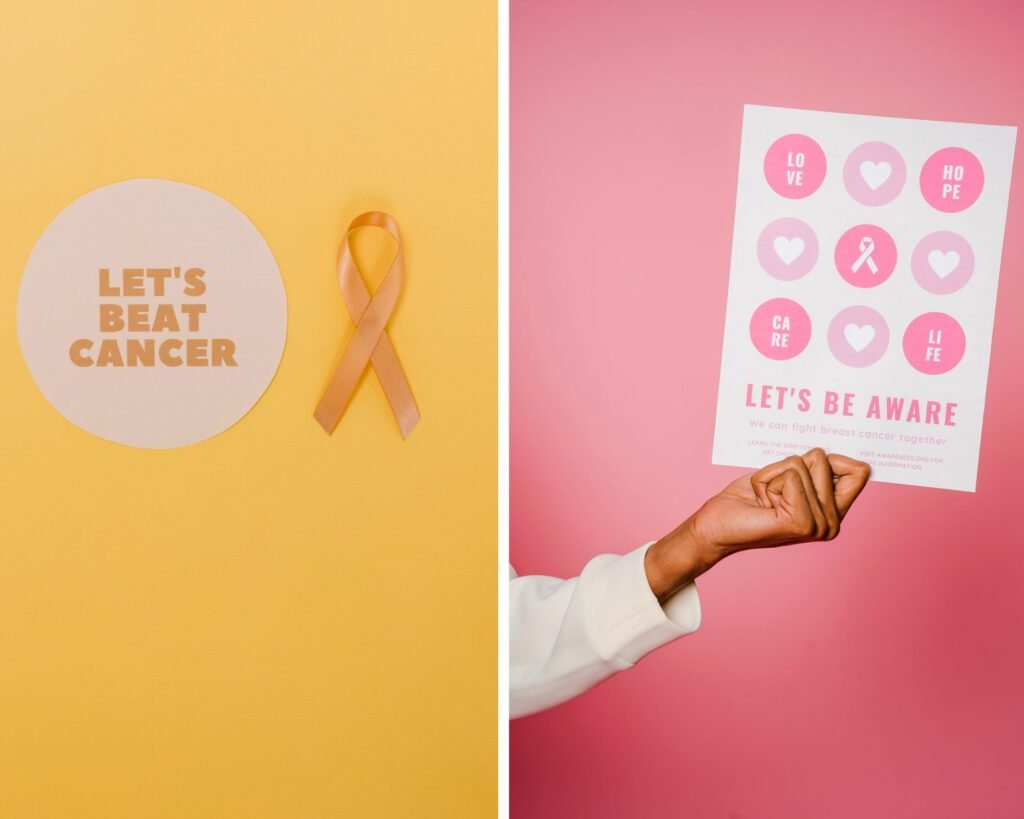World Cancer Day Campaign Theme 2023: Close the Care Gap
7 min read
World Cancer Day – An Overview
World Cancer Day is an annual event celebrated on February 4th to raise awareness about cancer and to encourage its prevention, detection, and treatment. The event is organized by the Union for International Cancer Control (UICC) and is an opportunity for people around the world to unite and show their support for those affected by cancer.
Key Facts About Cancer
- Cancer is a leading cause of death worldwide.
- Approximately 1 in 6 deaths globally is due to cancer.
- There are over 100 different types of cancer, including breast, lung, prostate, colon, and stomach cancer.
- Early detection and treatment greatly improves the chances of successful outcomes.
- Lifestyle changes such as maintaining a healthy diet and exercise, not smoking, and limiting alcohol consumption can reduce the risk of developing cancer.
- According to the World Health Organization (WHO), around 70% of all cancer deaths occur in low- and middle-income countries.
The Theme for World Cancer Day 2023
World Cancer Day has been observed annually since 2000, but campaigns with specific themes and messages were introduced later on. Prior to 2005, the focus of World Cancer Day was primarily on raising awareness about the disease and the need for increased resources for research and treatment. The UICC (Union for International Cancer Control) selects a different theme for World Cancer Day each year. Here are the all Campaigns’ Names their Descriptions:
World Cancer Day 3-Years Campaign 2022-2024 – Theme: Close the Care Gap
A multi-year campaign to raise awareness about disparities in cancer care globally.
Year 2022: Realising the Problem
-
- 2022 focused on recognizing the barriers that prevent access to cancer care, including income, location, and discrimination
- Encouraged people to:
- Question the current state of cancer care
- Reduce stigma
- Listen to the experiences of those affected by cancer
- Goal: create a future where everyone has equal access to health and cancer services.
Year 2023: Uniting our Voices and Taking Action
-
- Focus on building stronger alliances and collaborations to drive real-world change
- Encouraged individuals and communities to take concrete actions towards closing the care gap
- Actions can include:
- Providing transportation to cancer treatment
- Promoting healthy food options
- Call to mobilize friends, family, coworkers, and communities to work together towards a common goal.
Year 2024: Together, We Challenge those in Power
2024 yet to come, let’s us complete current year first by taking actions on the set agendas & plans. As next year we’ll be able to stand in front of people at top having power to influence. Plans & goals:
-
- Focus on engaging leaders to prioritize cancer and address health inequities
- Call for a commitment to:
- Prioritizing cancer
- Creating innovative strategies to confront inequity
- Investing resources to achieve a just and cancer-free world
- Demands leaders to eliminate health inequities by addressing their root causes
- Goal: ensure everyone has access to quality health services when, where and how they need it.
World Cancer Day Campaigns 2005-2021:
- 2019: “I Am and I Will” – This theme encouraged individuals to take personal responsibility for reducing the impact of cancer.
- 2018: “We Can. I Can.” – This theme encouraged collective and individual action to reduce the global impact of cancer.
- 2017: “Debunk the Myths” – This theme aimed to dispel common misconceptions about cancer and promote evidence-based information.
- 2016: “Not Beyond Us” – This theme highlighted the progress that has been made in the fight against cancer and encouraged continued action and investment.
- 2015: “Not I, but We” – This theme emphasized the importance of collaboration and partnership in the fight against cancer.
- 2014: “Debreat Cancer” – This theme aimed to reduce stigma and discrimination surrounding cancer, and encourage supportive environments for those affected by the disease.
- 2013: “Cancer: Did You Know?” – This theme aimed to increase knowledge about cancer, its causes and risk factors, and ways to prevent it.
- 2012: “Together it is possible” – This theme emphasized the importance of collaboration and partnerships in the fight against cancer.
- 2011: “We can. I can.” – This theme encouraged individual and collective action to reduce the global impact of cancer.
- 2010: “Cancer: Your Choice” – This theme encouraged individuals to take personal responsibility for reducing the impact of cancer through lifestyle changes and regular check-ups.
- 2009: “I Love Life” – This theme emphasized the importance of healthy lifestyles and encouraged individuals to adopt healthy habits to reduce the risk of cancer.
- 2008: “Cancer: Your Challenge” – This theme encouraged individuals to take action and make a difference in the fight against cancer.
- 2007: “Cancer: Don’t Ignore It” – This theme emphasized the importance of early detection and encouraged individuals to seek regular check-ups and screenings.
- 2006: “Cancer: More Than a Word” – This theme aimed to raise awareness about the impact of cancer on individuals, families, and communities.
- 2005: “Cancer: A Call to Action” – This theme emphasized the need for collective action and global commitment in the fight against cancer.
These campaigns aimed to increase awareness, inspire action, and mobilize people worldwide in the fight against cancer.
Most Commonly Recognized Cancer Ribbon Colors:
It’s estimated that there are currently around 80 (still not sure) different colors representing various types of cancer. It would be difficult to provide a comprehensive list of different colors used to represent various types of cancer. However, here is a list of some of the more commonly recognized colors:
- Pink for breast cancer
- Lavender for all cancers
- Teal for ovarian and cervical cancer
- Light blue for prostate cancer
- Orange for leukemia
- Yellow for sarcoma and bone cancer
- Gray for brain cancer
- Burgundy for multiple myeloma
- Dark blue for colon cancer
- Green for liver cancer
- Purple for pancreatic cancer
- Periwinkle for esophageal cancer
- Turquoise for throat cancer
- Gold for childhood cancers
- Red for heart cancer
- Brown for colorectal cancer
- White for lung cancer
- Light green for lymphoma
- Peach for uterine cancer
- Dark green for kidney cancer
- Olive for stomach cancer
- Navy blue for prostate cancer
- Lime green for non-Hodgkin lymphoma
- Light yellow for bladder cancer
- Robin’s egg blue for testicular cancer
- Tan for skin cancer
- Salmon for Hodgkin lymphoma
- Marigold for endometrial cancer
- Royal blue for stomach cancer
- Sapphire blue for thyroid cancer
- Silver for brain tumor awareness
- Royal purple for sarcoma
- Fuchsia for cervical cancer
- Coral for oral cancer
- Red and white for cervical cancer
- Rust for lung cancer
- Dark coral for gallbladder cancer
- Dark turquoise for neck cancer
- Sky blue for osteosarcoma
- Olive green for bile duct cancer
Again, this is not a complete list and different organizations may use different colors to represent various types of cancer.
The Global Impact of Cancer
Cancer has a profound impact on individuals, families, and communities around the world. It not only affects the health and well-being of those diagnosed, but also has economic and social consequences. Cancer can result in decreased productivity, loss of income, and increased healthcare costs.
How You Can Get Involved
- Educate yourself about cancer and its causes, risk factors, and early warning signs.
- Encourage your friends and family to make lifestyle changes to reduce their risk of cancer.
- Get regular check-ups and screenings, as early detection can greatly improve the chances of successful treatment.
- Donate to cancer research and organizations that support those affected by cancer.
- Share your story and raise awareness about the impact of cancer on individuals, families, and communities.
Importance of Cancer Research
Cancer research plays a crucial role in improving our understanding of the disease, developing new and better treatments, and ultimately finding a cure. Ongoing research also helps to identify new risk factors and early warning signs, which can lead to earlier detection and more successful outcomes.
Conclusion
Cancer continues to affect millions of people around the world, and World Cancer Day provides an opportunity to come together to raise awareness and show support for those affected. By educating ourselves, making lifestyle changes, and taking action, we can make a difference in the fight against cancer. Let us all make a personal commitment to reduce the impact of cancer and improve the lives of those affected.







